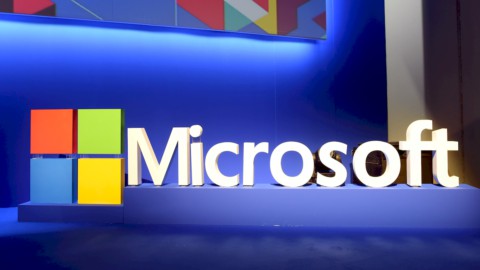We have become so used to dealing with official interest rates close to zero that we have forgotten about the remuneration of current accounts which was the basis of do-ut-des between bank and account holder: I leave you my money in the bank so that you can lend it to others (passive interests), in return you pay me a remuneration (interest income).
From 2008 to July 2022: 14 years of falling interest rates
From 2008, the annus horribilis of the failure of Lehman Brothers, the official rates, which in October of that year at 3,25-3,75%, began to fall step by step by the European Central Bank, which according to the mythical "Whatever it takes” by Mario Draghi was trying to get liquidity flowing again in a financial system that had become marble. This is how official rates are progressively reached zero in 2012 and even from there negative from 2014 until 2019. So that do-ut-des it is blocked: if the bank does not trust it to lend money, it has no interest in remunerating the savings.
Italian liquidity doubled in 10 years. Half stop on current accounts
Yet current accounts in recent years have always been very rich. According to the latest survey of the Fabi, the largest union in the credit sector, the financial wealth of Italians has risen to 5.256 billion euros, almost doubled in the last 10 years and according to the recent survey by Intesa Sanpaolo and the Einaudi Center, 44% of this liquidity is still in current accounts, even now that inflation erodes about 10% of the capital in a year.
The reversal of the situation: rates are rising again. But not for account holders
Since July of this year, the ten-year context of interest rates has changed: la ECB, this time, to curb inflation, it had to reverse the trend of interest rates, taking them from zero (in July) to 2,5% (in December).
But rewinding the rate tape, if it immediately translated into a increase in bank lending rates, from loans to mortgages, has not benefited the other side of the do-ut-des: that of current accounts which most banks still do not pay.
The immediate reaction of the banks to raise mortgage rates
With the cost of money reaching 2,5% the 6% horizon for interest on installments it appears ever closer, reported Fabi. "For a long time we had even negative rates and high costs, now there is finally some breathing room" justifies the analyst of a large Italian bank, even if, as we know, the ECB has also taken steps to "shield ” institutions from paying negative interest on excess reserves on current accounts of national central banks.
According to the last one ABI report, in October the average rate charged on deposits (which includes current accounts, but also savings deposits and certificates of deposit) was limited to 0,37% compared to 0,34% the previous month. So a big difference compared to the interest earned from commitments. Which will translate to positive bank balance sheets in the coming quarters.
Ing, Ibl Banca and Banca Sistema: the only ones that also pay the current account
According to the platform Compareaccounts.it among the banks that make a remunerated current account available, ControCorrente di is reported IBL Bank which currently offers a gross interest rate of 2,00% until 31 December 2023, also taking charge of the stamp duty for the whole of 2023 and discounting the fee for the first 6 months of use. And there is also YES account! Current of Bank System – a current account with a free annual fee and which offers a gross interest rate of 1,50% on the sums deposited. Just before Christmas it also arrived Ing: For those who already have an Orange account, starting from April 2023, savings will grow with an interest rate of 0,50% per annum gross, compared to the previous 0,001%. For the rest, everything is silent, while before 2008, the major banks competed in a noble competition in announcing the rise in interest rates also on current accounts.
On the other hand, deposit accounts have grown, both tied and untied ones
In this sector, the noble race was seen, starting with the so-called "non-traditional" banks. “If before the rate hike, many of the most important banks did not offer a deposit account, over the last few months and in particular since July, consumer banks have also moved, they tell Confrontaconti.it. "These were banks that have historically observed the behavior of the institutions more specialized in deposit accounts and the types of rates offered by them according to the duration of the bonds".
90/95% of deposit accounts present on the market today are of the type "bound”, which are divided into two subcategories, i.e. encumbered but non-releasable where the sums deposited are encumbered for a pre-established period of time (for example 12, 18 or 36 months) and cannot be released in any way. Then there are deposit accounts bound, but unbreakable and which therefore, in case of need, make it possible to recover the sums deposited against the loss of all or part of the interest.
Le constraint durations they tend to start from 6 months up to 60 months with all intermediate ranges of duration. Obviously the highest rates are found on longer durations, but it must be said that if we compare the 12 months with the 60, on the 12 months the best offers are around 2,50% gross to then reach 4,00 Annual gross % for 60-month (5-year) bonds. The fact that the rate on longer durations is proportionally lower takes into account the intrinsic risk in the medium term of a possible reduction in interest rates by the central bank, they say to Confrontaconti.
The first to launch deposit accounts in 2022
The forerunner with deposit accounts was in October Illimity by Corrado Passera who offered a rate of up to 4% on a 60-month bond. Then others came. For example the proposals of Bank CF+ which proposed a rate of up to 4% gross per annum for maturities of up to 60 months with the online term deposit account, while the same Ing della pumpkin orange offers 2,5% per year on the amounts tied up in the Orange Deposit for 12 months for those who credit their salary or pension to the Orange Account, opening the account by 31 December. Also Bank System has revised the interest rates on all maturities of SI account! Deposit with yields from 0,50% to 4,10% (over ten years).
The great variety of the Treasury's offer
But in hindsight, in a context of inflation at its peak, deposit accounts have a major competitor: the offers of the Italian Treasury with an exceptional variety of products and maturities. Starting from Boots which have returned to offering yields above 2% for those at 3 and 6 months up to 3% on the one-year maturity.
And then there's the roundup of BTP offering up to over 4,50% on longer maturities. All titles that can be purchased at discounted prices at auction, every month and which, with an eye to market trends as happens with stock exchange lists, can be resold if necessary.





